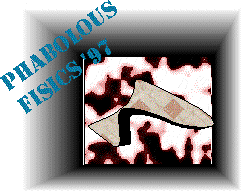

Thomas O'Sullivan's Mathematics & Physics Pages
Uniformly Accelerated motion
|
1995 Q. 1(a) A particle moving in a straight line with constant acceleration passes three points p, q, r and has speeds u and 7u at p and r respectively.
Solution:
Between p and q v2 = u2 + 2ax Between q and r (7u)2 = v2 + 2ax Þ 49u2 = v2 + 2axThen getting rid of 2ax gives: v2 = u2 + 2ax 49u2 = v2 + 2ax
(ii) Applying the formula v = u + at to each half: Between p and q: 5u = u + at1 Þ t1 = 4u / aBetween q and r: 7u = 5u + at2 Þ t2 = 2u / ai.e. t1 = 2t2 |
1995 Q. 1(b) A juggler throws up six balls, one after the other at equal intervals of time t, each to a height of 3m. The first ball returns to his hand t seconds after the sixth was thrown up and is immediately thrown to the same height, and so on continually. (assume that each ball moves vertically). Find
Solution
|
© T O’Sullivan 1999 (
http://homepage.eircom.net/~phabfys )